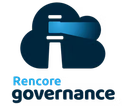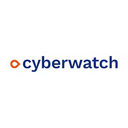Vulnerability Scanner software: purchase guide
Vulnerability Scanner Software in 2025: Stop Guessing, Start Securing
What is Vulnerability Scanner Software
Vulnerability scanner software is your digital security guard, constantly on the lookout for weaknesses that cybercriminals could exploit. It scans your networks, applications, devices, and infrastructure to detect flaws—before anyone else can take advantage of them.
Whether it’s an outdated patch, a misconfigured firewall, or a server exposed to the web, vulnerability scanners give you the visibility and action plan you need to stay ahead. They not only tell you what’s broken, but how to fix it.
In 2025, with attack surfaces growing exponentially, this kind of continuous and automated vigilance is not a bonus—it’s business-critical.
Why Vulnerability Scanners Are Essential
Here’s the reality: cyber threats don’t sleep. Every day, new vulnerabilities are discovered, and automated bots are scanning the web looking for systems that haven’t kept up. If you’re not actively finding your own weaknesses, someone else will.
A vulnerability scanner flips your approach to cybersecurity from reactive to proactive. Instead of waiting for a breach, you’re identifying risks early, fixing them fast, and keeping your infrastructure resilient.
Here’s why these tools are more important than ever:
The digital perimeter is gone. With remote work, cloud environments, mobile devices, and APIs, your infrastructure is more dispersed than ever—and harder to monitor manually.
Compliance standards are non-negotiable. Regulatory frameworks like PCI-DSS, HIPAA, ISO 27001, and GDPR often require vulnerability scans as part of routine audits.
Patch cycles aren’t perfect. Even with automation, it’s easy for critical updates to slip through the cracks. Scanners flag what’s been missed.
Reputation and trust are fragile. One breach can mean years of damage control. Prevention is far more cost-effective than crisis management.
Clients demand proof of security. Showing you’re scanning regularly—and acting on it—builds confidence with customers and partners.
In short, vulnerability scanners aren’t just IT tools. They’re part of how you demonstrate responsibility, resilience, and professionalism in a digital-first world.
How to Choose the Right Vulnerability Scanner
The best scanner for your business isn’t necessarily the one with the longest feature list. It’s the one that fits your infrastructure, your workflows, and your team’s technical capacity.
Start by looking at what you actually need to secure. Internal systems? Cloud-based environments? Public-facing websites? Different scanners specialize in different areas.
Also, think beyond just detection. A good scanner:
Helps you prioritize what matters (not just flood you with alerts).
Gives you remediation advice that’s actually usable.
Works smoothly with your existing tools (ticketing systems, CI/CD pipelines, SIEM platforms).
Doesn’t require weeks of onboarding just to get up and running.
Ease of use is key. If your team can’t use the tool quickly and confidently, it won’t be used consistently—and that defeats the whole point.
With that in mind, let’s look at some of the leading vulnerability scanners on the market this year.
Top Vulnerability Scanner Software for 2025
| Software |
Key Features |
Pricing |
Trial and Demo |
Best For |
| SecludIT |
Cloud-native scanning, automatic infrastructure mapping, real-time alerts, intuitive dashboard |
Pricing on request |
✅ Free version
✅ Free trial
✅ Free demo |
Cloud-driven teams and DevOps environments that need smart detection without complexity |
| HTTPCS Security |
Website vulnerability scanner, compliance-focused, OWASP Top 10 detection, auto-reporting |
From €55.00/month |
✅ Free version
✅ Free trial
✅ Free demo |
Web-focused companies that want fast deployment and continuous monitoring |
| HIAB |
Internal network scanning, agentless setup, granular reporting, customizable scan templates |
Pricing on request |
✅ Free version
✅ Free trial
✅ Free demo |
Mid-size to enterprise IT teams looking to audit internal infrastructure and endpoints |
| OUTSCAN |
External scanning, asset discovery, scalable scanning engine, enterprise-ready dashboards |
Pricing on request |
✅ Free version
✅ Free trial
✅ Free demo |
Organizations managing large external environments who need reliable visibility and control |
| OUTSCAN PCI |
PCI-specific scanning tool, built-in audit reports, certified scan engine, customizable compliance profiles |
Pricing on request |
✅ Free version
✅ Free trial
✅ Free demo |
Merchants, SaaS vendors, or any business that needs verified PCI compliance scans |
Emerging Trends in Vulnerability Scanning for 2025
In 2025, vulnerability scanners aren’t just keeping up with the evolving threat landscape—they’re reshaping how businesses approach security. But not all trends are created equal. Here are the four that truly matter this year—because they’re not just new, they’re changing how we protect what matters.
Security Moves Left—For Real This Time
We’ve talked about “shifting security left” for years, but 2025 is the year it actually sticks. Vulnerability scanning is no longer a post-deployment activity—it’s baked directly into development pipelines.
Modern scanners now integrate with CI/CD tools like Jenkins, GitLab, and Azure DevOps, scanning every pull request, container build, or staging deployment automatically. The result? Developers catch flaws early, fix them faster, and reduce the volume of high-risk issues before they ever reach production.
More importantly, the shift has cultural weight. Security is becoming a shared responsibility—developers aren’t “checked” by security teams, they’re empowered by the right tools to build more secure software from the start.
What it means for you: If your vulnerability scanner doesn’t plug into your SDLC, it’s not future-proof.
From Alerts to Action—AI-Powered Prioritization Is a Game-Changer
Let’s face it: nobody has time to fix everything. The real challenge isn’t detecting vulnerabilities—it’s knowing which ones matter.
Enter AI-powered prioritization. The most advanced scanners in 2025 go beyond raw detection and apply contextual analysis: how exposed is the system? Is there known exploit code? How likely is it that this weakness will be targeted in the wild?
This shift from quantity to risk-weighted quality transforms vulnerability management from a reactive checklist into a strategic process. You stop chasing noise and start fixing what could actually hurt your business.
What it means for you: The best scanners won’t flood your inbox with CVEs—they’ll tell you what to patch today and why it matters.
Hybrid Environments Need Hybrid Visibility
The perimeter is dead, and security teams are juggling on-prem infrastructure, cloud workloads, mobile endpoints, and third-party SaaS platforms—all at once. The old model of scanning isolated systems is simply not enough.
The leading vulnerability scanners now offer hybrid visibility, combining internal scanning (for systems behind firewalls) with external scanning (what attackers see). Some even extend to containers, APIs, IoT devices, and unmanaged assets discovered automatically via passive monitoring.
This end-to-end approach is essential not just for security, but for compliance. You need to prove that you’re protecting everything, everywhere—without blind spots.
What it means for you: Choose a scanner that sees your infrastructure the way attackers do: as one interconnected whole.
Continuous Scanning Is the New Baseline
Quarterly scans used to be fine—back when software didn’t change daily. But today, cloud environments are dynamic, APIs are updated weekly, and new endpoints spin up constantly.
That’s why businesses are adopting always-on scanning—real-time monitoring that catches configuration drifts, new services, or exposed ports the moment they happen.
These continuous tools are especially powerful when tied to automation. A vulnerability is detected? The scanner kicks off a ticket, alerts the right team, and optionally triggers a fix. It’s no longer just about finding issues—it’s about accelerating resolution.
What it means for you: If your scanner isn’t running all the time, you’re not seeing the real picture.
Conclusion
You can’t secure what you can’t see. And in a world where threats evolve daily, visibility isn’t optional—it’s foundational.
Vulnerability scanner software gives you that visibility. It surfaces the blind spots. It empowers your team to act. And it gives your business the confidence to move fast, innovate boldly, and stay protected along the way.
So if you’re still relying on hope as a strategy—or on last year’s toolset—it’s time to upgrade.
Because in 2025, staying ahead of threats isn’t about reacting faster. It’s about never getting caught off guard in the first place.













